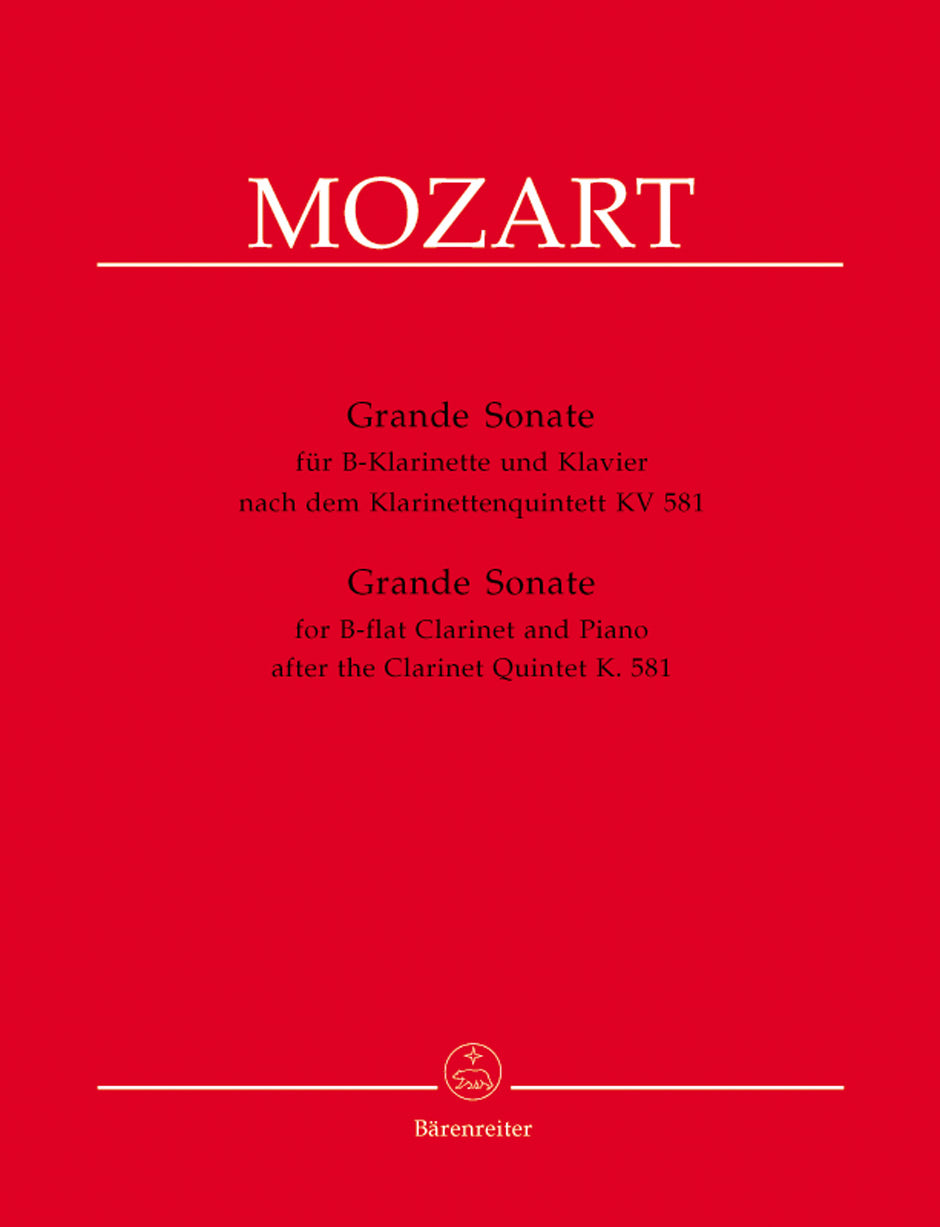

BARENREITER - 345062
Mozart Grande Sonate for B flat Clarinet and Piano (nach dem Klarinettenquintett KV 581)
Composer: Wolfgang Amadeus Mozart
Publisher: Bärenreiter
Instrumentation: Clarinet
Binding: Stapled
Dimensions: 11.8 in x 9.1 in
Pages: 38
Mozart Grande Sonate for B flat Clarinet and Piano (nach dem Klarinettenquintett KV 581)
Juilliard Store
144 West 66th Street
New York NY 10023
United States
Choose options

Mozart Grande Sonate for B flat Clarinet and Piano (nach dem Klarinettenquintett KV 581)
Juilliard Store
144 West 66th Street
New York NY 10023
United States
Mozart Grande Sonate for B flat Clarinet and Piano (nach dem Klarinettenquintett KV 581)
Juilliard Store
144 West 66th Street
New York NY 10023
United States
Editor: Hogwood, Christopher
Orchestral scoring : clarinet/piano
Product format: Performance score, part(s)
Binding: Stapled
Pages / Format: VI, 31 /7 - 30,0 x 23,0 cm
Two new Bärenreiter publications turn back the time and offer us an insight into performance practice of the early 19th century; music meant to be played!
The arrangements are of highly popular Mozart chamber compositions, the Quintet for Clarinet and String Quartet K. 581 in an anonymous arrangement from 1809 for Clarinet (or Violin) and Piano as well as Mozart’s two duos for Violin and Viola K. 423-424 arranged by Johannes Traeg in 1805 for Violin and Violoncello.
The “Grande Sonate” for Clarinet (or Violin) and Piano, published by Artaria, is an early arrangement of a Mozart work of which no autograph exists.
The editor, Christopher Hogwood, weaves together the patchwork of sources for the quintet , justifying this arrangement for clarinet and piano as a serious source for the work.
Johannes Traeg , an acquaintance of Mozart’s and a publisher, quickly responded to the public demand for domestic Mozart arrangements at the start of the 19th century.
His arrangements of the Violin – Viola duos K. 423-424 for Violin and Violoncello, published in 1805, are a response to the need for a more active cello part in chamber music.
Dietrich Berke, editor of the “New Mozart Edition” and editor of the NMA volume containing the duos, clearly shows the path from the Mozart autograph to the arrangement and offers us an informative preface on the duos and their place in domestic music making at the turn of the 19thcentury.
Short text:
The Grande Sonate for clarinet (or violin) and piano, published by Artaria , is an early arrangement of a Mozart work where no autograph exists. The editor Christopher Hogwood weaves together the patchwork of sources for the quintet, justifying this arrangement for clarinet and piano as a serious source for the work.
- Mozart masterpieces in contemporary arrangements
- “Grande Sonate ” in versions for clarinet in A and B-flat
- First modern editions
- Bärenreiter quality with detailed preface and critical report
